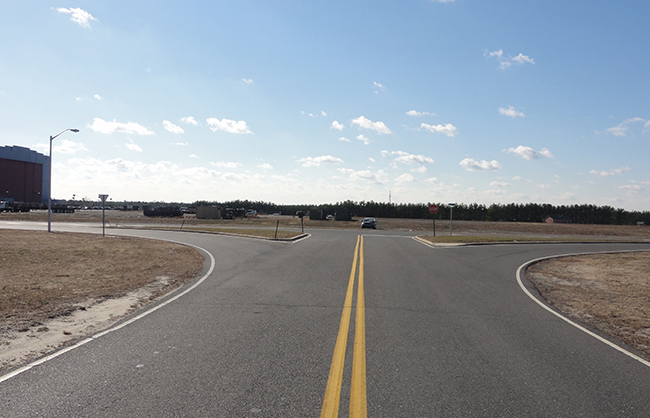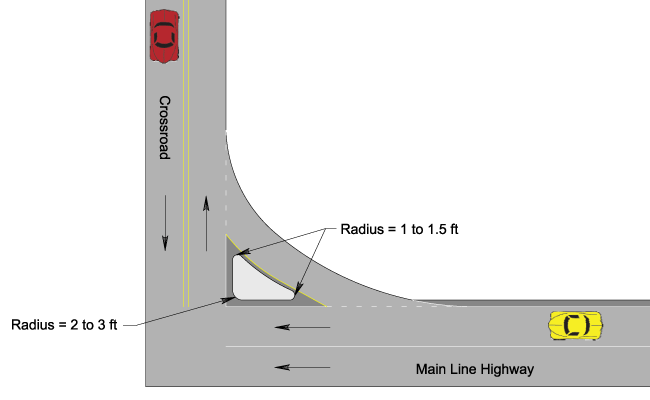Channelization Design Standards and Considerations

Raised islands should not be in the natural path of vehicles and should be clearly visible. Major through-traffic flow should be favored and not restricted. Avoid small islands that a vehicle could easily drive over. Raised corner islands for turning roadways should not be less than 75 square feet for rural intersections and 50 square feet for urban. If islands must be small, provide adequate delineation such as pavement markings to warn motorists; or substitute a painted island for the raised island.
Divisional islands can be narrow (4-foot typical minimum), but can get wider based on tapering for left-turn lanes. Where medians and divisional islands are used, the through lanes should line up through the intersection.
Channelization Island Distances

Raised channelization islands should be offset from the edge of travel lane by the width of a shoulder if possible, but no less than 2 feet from the travel lane. In no case should an island obstruct or reduce adjacent lanes, as this may cause the motorist to sway to avoid them.
Where islands are smaller, painted islands can be used to show the travel path. Similar pavement markings are used versus those with a raised island, however hatching can be used to discourage travel over the island.


